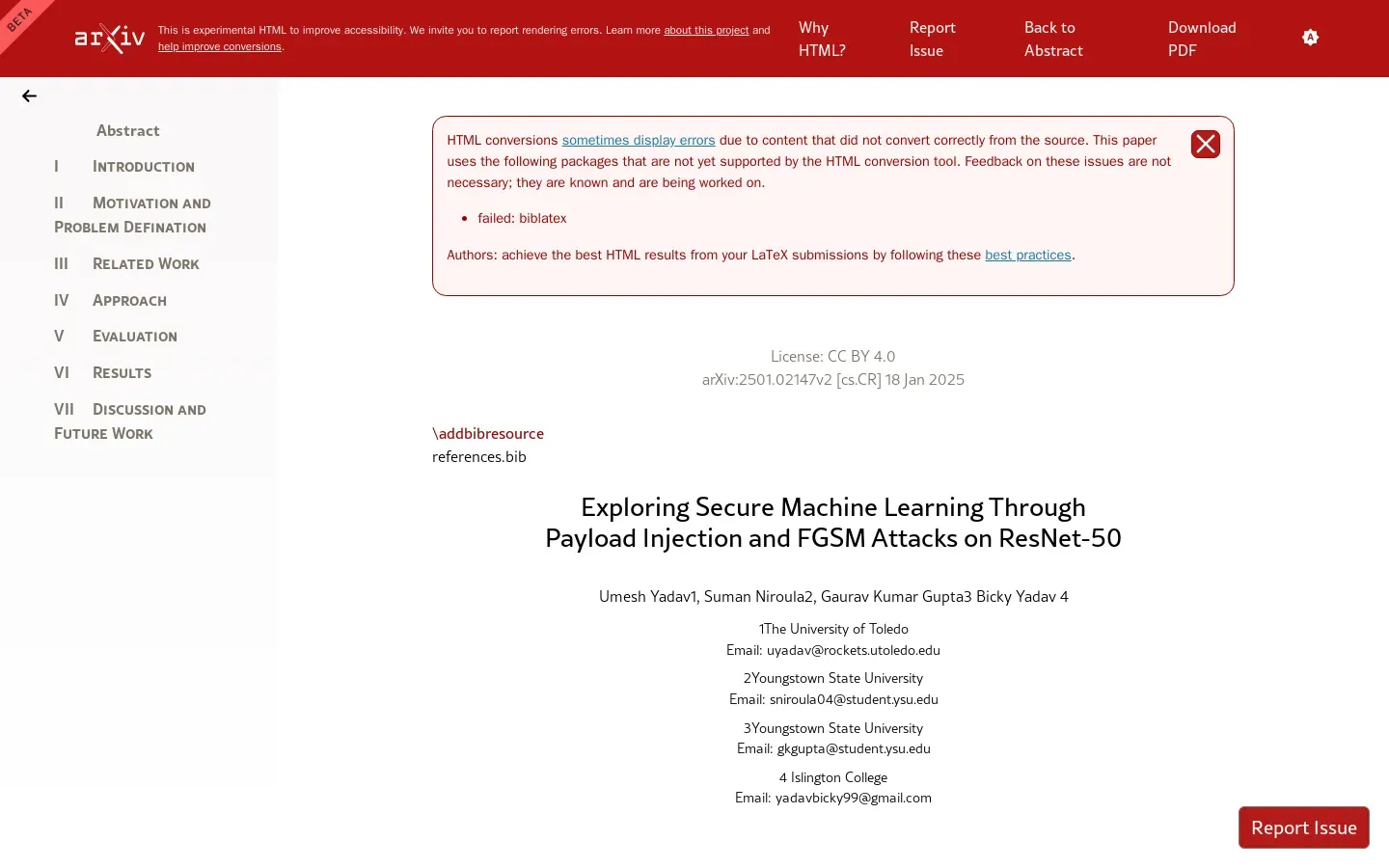
Research Examines Vulnerabilities in ResNet-50 Machine Learning Model
/ 4 min read
Quick take - The article examines the resilience of the ResNet-50 image classification model against adversarial attacks, highlighting the need for robust defense mechanisms to enhance security in machine learning applications, particularly in critical sectors like healthcare and finance.
Fast Facts
-
Research Focus: The study evaluates the resilience of the ResNet-50 model against adversarial attacks, specifically using the Fast Gradient Sign Method (FGSM) and payload injection techniques to assess vulnerabilities.
-
Key Findings: FGSM perturbations decreased model accuracy and increased confidence in incorrect predictions, highlighting risks in critical applications like healthcare.
-
Payload Injection Vulnerability: The research revealed that payload injection techniques could significantly compromise model predictions, necessitating stronger defenses in security-sensitive environments.
-
Methodology: The study employed adversarial example generation, payload injection assessments, and cross-model vulnerability evaluations to analyze the model’s performance under attack.
-
Future Directions: Recommendations include developing advanced defense strategies, testing across various machine learning architectures, and conducting longitudinal studies to enhance resilience against evolving adversarial threats.
In an increasingly digital world, where machine learning models are becoming integral to various high-stakes environments such as healthcare and autonomous driving, ensuring their security against adversarial attacks cannot be overstated. The research surrounding the resilience of the ResNet-50 image classification model against these threats sheds light on significant vulnerabilities that, if left unaddressed, could lead to dire consequences. The findings from this research not only illuminate the challenges posed by malicious payloads but also propose robust defense mechanisms that could enhance the reliability of these systems.
At the core of this investigation is the development of effective defense strategies. Researchers have taken a proactive stance in creating robust mechanisms designed to bolster the security of machine learning systems. One of the pivotal techniques examined is the Fast Gradient Sign Method (FGSM), which generates adversarial examples—slightly altered images that can mislead models into making incorrect predictions. The mathematical formulation, (x_{\text{adv}} = x + \epsilon \cdot \text{sign}(\nabla_{x} J(\theta, x, y)}), encapsulates how small perturbations can significantly distort a model’s output without altering human perception.
The implications of such manipulations are alarming, especially when considering real-world applications such as healthcare diagnostics where accuracy is paramount. Payload injection techniques further complicate this landscape, as they aim to compromise model predictions by embedding malicious elements within input data. This research meticulously evaluates the effectiveness of these payload injections, revealing a concerning success rate in extracting harmful information from images processed by ResNet-50.
An essential aspect of this study is its emphasis on cross-model vulnerability assessments. High-performing neural networks are often perceived as impenetrable; however, this research underscores that even top models like ResNet-50 harbor vulnerabilities in security-critical applications. The analysis brings to light a critical need for continuous evaluation and strengthening of defenses against adversarial incursions.
The findings on how FGSM perturbations impact model accuracy and confidence levels offer valuable insights. Specifically, researchers investigated whether adversarial attacks led to an increase in the model’s confidence in erroneous predictions—a phenomenon that could have catastrophic effects in scenarios where lives depend on accurate outputs, such as medical imaging or autonomous vehicle navigation. Understanding this relationship is fundamental for developing strategies that not only detect but also mitigate adversarial influences.
While this research provides a solid foundation for understanding and addressing vulnerabilities within machine learning frameworks, it also identifies gaps that warrant further exploration. Areas such as the integration of additional defensive measures and enhancements to existing frameworks are ripe for investigation. As technology continues to evolve, so too will the tactics employed by malicious actors aiming to exploit weaknesses in AI systems.
In conclusion, as we delve deeper into the intricate world of machine learning security, the insights gleaned from studies like those surrounding ResNet-50 are invaluable. They remind us that while advancements in AI present remarkable opportunities, they simultaneously introduce significant risks that must be proactively managed. Looking ahead, fostering collaboration between researchers and practitioners will be crucial in developing resilient systems capable of withstanding adversarial threats while maintaining their operational integrity in an ever-more complex digital landscape.



